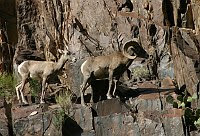 |
NPS Photo
St. Croix National Scenic Riverway |
"O'Hare Airport would become a part of our lives...travels were numerous, sometimes adventurous..." Grant Petersen
On May 30, 1971, the National Park Service opened a Field Office in the Chicago suburb of Des Plaines, Illinois. Bob and I arrived there at that time – he from Mt. Rainier and I from Fire Island National Seashore. The specific location was selected, in part, to be situated in the same office complex as the Secretary of the Interior’s Field Representative for the Great Lakes and to provide easy access to O’Hare Airport. Various projects and programs would be coordinated with the Interior Field Representative. O’Hare Airport would become a part of our lives.
Bob was responsible for setting up the Chicago Field Office as the Assistant to the Director of the Northeast Region. I was the Environmental Specialist/ Management Assistant. With a realignment of regional boundaries, the office would become aligned with the Midwest Region shortly after opening and expand to a peak staff of six. Functions of the Field Office focused primarily on providing support to newly authorized park sites; cooperative activities (today these are called partnerships) with other federal, state and local agencies; and fostering outreach programs within the six Great Lakes States.
Consistent with his style of management and his desire to mentor, Bob insured that I participated as a full partner in numerous inter-agency studies such as the North Country National Scenic Trail study (Minnesota and Wisconsin), preparation of the master plan for the Ice Age National Scientific Reserve (Wisconsin), the Service-administered Historic and Natural National Landmarks, and environmental education outreach programs within the Great Lake states of Minnesota, Wisconsin, Michigan, Indiana, Ohio and Illinois.
Much of Bob’s time was devoted to assisting superintendents of the newly authorized areas, in particular, St. Croix National Scenic Riverway (MN and WI), Sleeping Bear Dunes National Lakeshore (Michigan) and Indiana Dunes National Lakeshore (Indiana) with respect to their legislatively created Advisory Commissions and related issues.
Bob was a great guy to work with and to know. Our travels flying in and out of O'Hare were numerous, sometimes adventurous, and oftentimes provided opportunities for Bob to display a bit of his wit. On one occasion as we sat on board a plane being heavily doused with anti-icing solution, wondering if the plane would ever – or could ever – get off the ground, we were joking about items in the morning newspaper. Bob suddenly became quiet and, with the best poker face he could muster, looked at me and said, “Do you realize that if this plane should crash, an entire National Park Service office will be wiped out? Should we be traveling in separate planes?”
We also enjoyed some good laughs on the golf course (at each other’s expense AND on our own time, I would add) while becoming as familiar as possible with the resources of the Great Lakes parks.
A favorite memory for me was a several day/night canoe trip within the St. Croix National Scenic Riverway. After an eventful day, which included being dumped on by rain and Bob catching all the fish, we pitched camp for the night. After a dinner of Bob’s fish, I went to the river bank to fetch some water. Grasping a handful of vegetation as I leaned over the water, my hands slowly slipped along the wet grass, and I ended up in the river, evoking laughter from Bob and myself at my misfortune.
That night it was Bob’s turn. Always enjoying onion chips, he brought the remainder of his bag into the tent with him. He quickly fell asleep with the bag in hand and his head against the insect netting. As night descended and while Bob snored, I noted a large skunk heading toward the tent. For fear of getting us heavily sprayed, I remained perfectly still and watched as the skunk came to the tent, sniffed the onion chips and Bob’s head, and proceeded to scratch the netting. Bob awoke with a yell, the skunk ran (without leaving any telltale scent behind), and Bob and I were reduced to unrestrained laughter! These are just two of the enjoyable memories of working with and knowing Bob.
On March 31, 1975, Bob moved on to begin his years as Superintendent of Jefferson National Expansion Memorial leaving the legacy of a National Park Service office that had admirably fulfilled its park assistance and partnership role. In the years that followed, we would cross paths at training courses, while on details, and at conferences. Conversations would often evoke memories of our humorous adventures, the projects – and especially the people associated with them – as well as the happenings of our respective growing families.
In remembering Bob, my wife, Donna, and I extend to Mitzi and the family our condolences, thoughts and prayers.
Grant Petersen, Munising, Michigan
Retired as Superintendent, Pictured Rocks National Lakeshore, Munising, MI
 |
| NPS Photo St. Croix River bridge |












